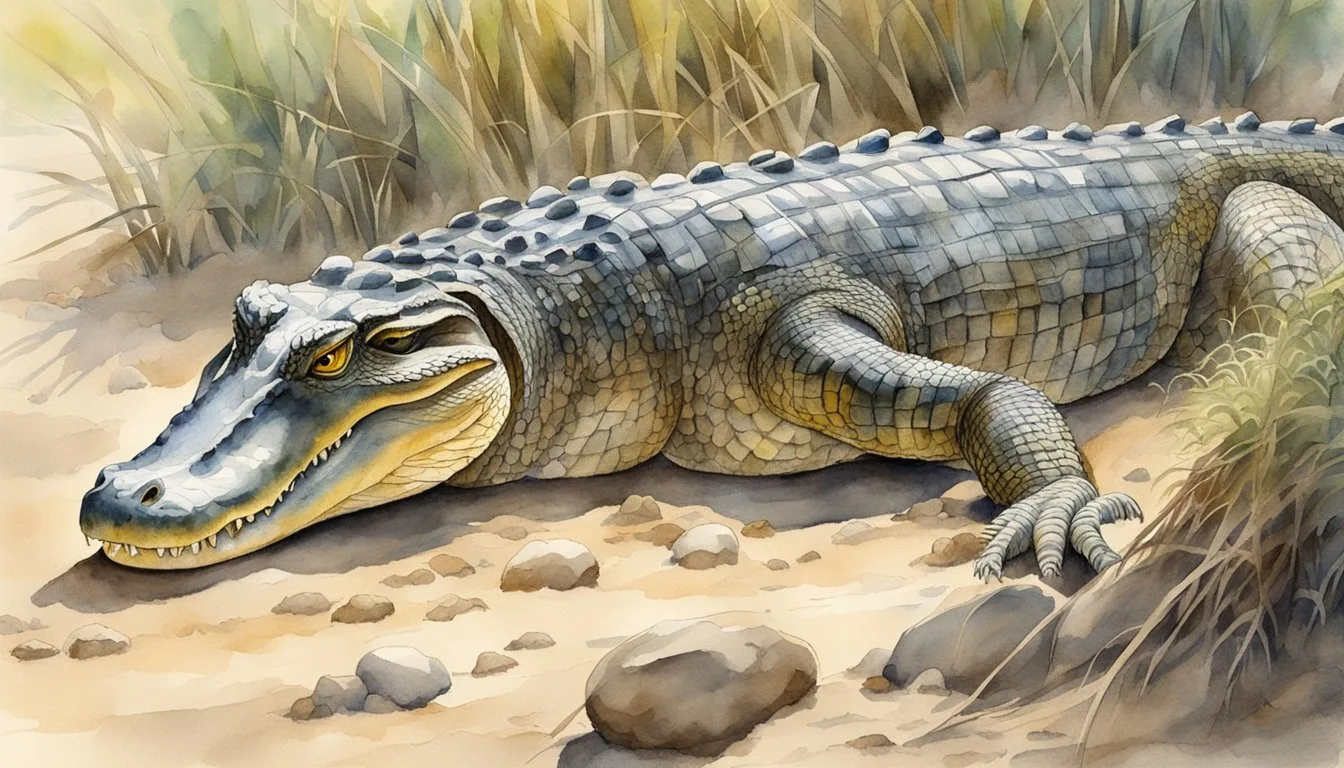Nile Crocodile Characteristics
The Nile Crocodile, Crocodylus niloticus, is one of the most formidable freshwater predators in Africa with notable characteristics ranging from its substantial size and weight to its specialized hunting behavior.
Anatomy and Appearance
The Nile Crocodile is distinguished by its robust body, armored with tough scales, and a powerful tail that contributes to its strong swimming abilities. Adult Nile Crocodiles typically reach sizes between 13.1 and 14.8 feet long, and can weigh approximately 900 pounds. Males are generally larger than females. Noteworthy are the crocodile’s jaws filled with sharp teeth and its eyes that sit high on the head, giving the crocodile an advantage while lurking beneath the water’s surface. These reptiles sport eyes with a unique green hue and are cold-blooded, relying on their environment to regulate their body temperature.
- Size: Males up to 19.7 feet, Females smaller
- Weight: Generally around 900 pounds
- Characteristics: Powerful tail, armored scales, sharp teeth
- Special Features: High-set green eyes for sub-surface vision
Read more about Nile Crocodile physical characteristics
Habitat and Distribution
The Nile Crocodile can be found in various freshwater habitats across sub-Saharan Africa, including rivers, swamps, lakes, and sometimes estuaries. This species is widely spread, occurring in 26 African countries. Its habitat preference encompasses a range of water bodies from the eastern, southern, and central regions of the continent.
- Habitats: Rivers, Swamps, Lakes, Estuaries
- Distribution: 26 countries across sub-Saharan Africa
Discover detailed distribution of the Nile Crocodile
Diet and Hunting Behavior
Aptly described as an ambush predator, the Nile Crocodile‘s diet consists of anything it can overpower, from fish, birds, and mammals to amphibians and occasionally insects and carrion. These predators utilize a stealth approach, waiting motionless in the water for unsuspecting prey to come within range. The Nile Crocodile’s diet is varied and opportunity-based, allowing it to remain the apex predator in its environment.
- Prey: Fish, Birds, Mammals, Amphibians, Insects, Carrion
- Hunting: Ambush, stealth in water
Learn more about Nile Crocodile diet and hunting behavior
Reproduction and Conservation

The Nile crocodile’s life cycle is a remarkable journey from egg to apex predator, while conservation efforts play a crucial role in the species’ future amid various threats.
Life Cycle and Reproduction
The reproduction of Nile crocodiles begins with the mating ritual, where males attract females through an elaborate display. Females lay their eggs, averaging 50 per clutch, in sandy nests near water bodies. Incubation is a critical phase, lasting about 90 days, after which the hatchlings emerge. These juvenile crocs have a high mortality rate but receive some protection from their mothers, who transport them to the water and may guard them for a period.
Conservation and Threats
The conservation status of the Nile crocodile is listed as Least Concern by the IUCN, but certain populations are facing threats that could impact their future. Habitat loss and pollution contribute to a decline in some regions, with illegal hunting for their hides being a significant problem. Protection measures are in place in many areas to safeguard these species against hunting, and conservation programs are essential to maintain their ecological role in their freshwater habitats.

